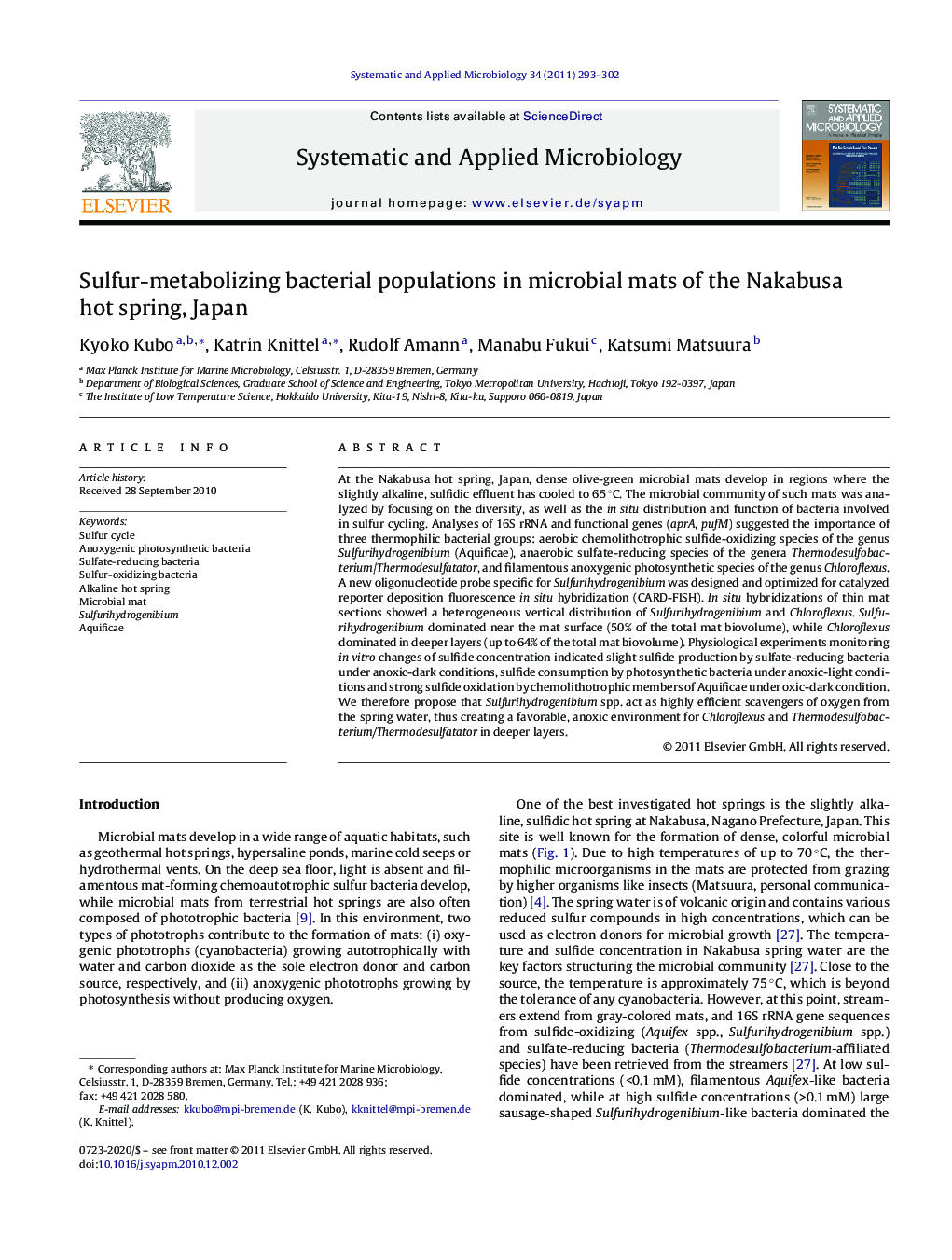| Article ID | Journal | Published Year | Pages | File Type |
|---|---|---|---|---|
| 2063319 | Systematic and Applied Microbiology | 2011 | 10 Pages |
At the Nakabusa hot spring, Japan, dense olive-green microbial mats develop in regions where the slightly alkaline, sulfidic effluent has cooled to 65 °C. The microbial community of such mats was analyzed by focusing on the diversity, as well as the in situ distribution and function of bacteria involved in sulfur cycling. Analyses of 16S rRNA and functional genes (aprA, pufM) suggested the importance of three thermophilic bacterial groups: aerobic chemolithotrophic sulfide-oxidizing species of the genus Sulfurihydrogenibium (Aquificae), anaerobic sulfate-reducing species of the genera Thermodesulfobacterium/Thermodesulfatator, and filamentous anoxygenic photosynthetic species of the genus Chloroflexus. A new oligonucleotide probe specific for Sulfurihydrogenibium was designed and optimized for catalyzed reporter deposition fluorescence in situ hybridization (CARD-FISH). In situ hybridizations of thin mat sections showed a heterogeneous vertical distribution of Sulfurihydrogenibium and Chloroflexus. Sulfurihydrogenibium dominated near the mat surface (50% of the total mat biovolume), while Chloroflexus dominated in deeper layers (up to 64% of the total mat biovolume). Physiological experiments monitoring in vitro changes of sulfide concentration indicated slight sulfide production by sulfate-reducing bacteria under anoxic-dark conditions, sulfide consumption by photosynthetic bacteria under anoxic-light conditions and strong sulfide oxidation by chemolithotrophic members of Aquificae under oxic-dark condition. We therefore propose that Sulfurihydrogenibium spp. act as highly efficient scavengers of oxygen from the spring water, thus creating a favorable, anoxic environment for Chloroflexus and Thermodesulfobacterium/Thermodesulfatator in deeper layers.
